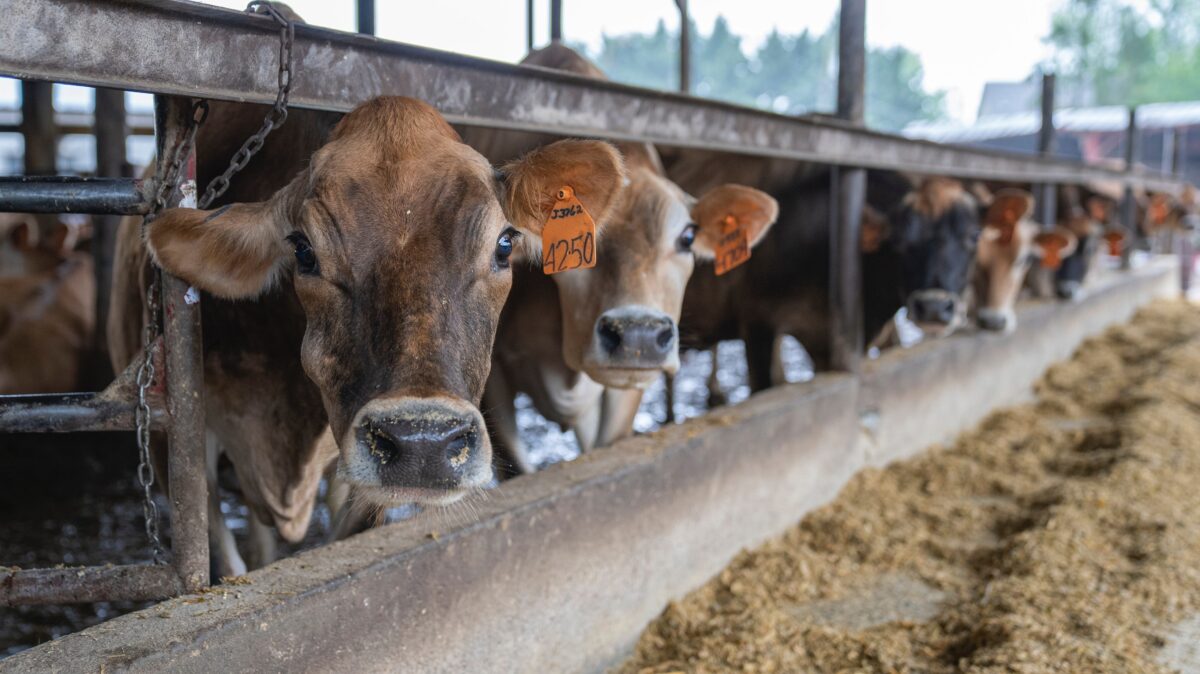Coming to the Table to Modernize Milk Markets
TOPICS
LivestockZippy Duvall
President

photo credit: Mark Stebnicki, North Carolina Farm Bureau
Zippy Duvall
President
I got my start in farming helping my dad with dairy cows. I loved it from the start when I was just a young boy, and I stayed in the dairy business for nearly 30 years. But there were too many mornings when I’d open up my milk check and be shocked by how small it was. Now, I know that farmers are price takers, not price setters. We all work hard to produce a healthy, safe, and quality product, but to stare at a check that could barely pay my expenses sure wasn’t easy. I tried to understand how milk prices were set, but the system was, and still is, confusing. More than 40 years later, I hear the same frustration from nearly every dairy farmer I encounter across the country.
As I tried to learn more, I realized that many different groups were trying to change the federal milk marketing orders that determined the prices – and they often didn’t agree. I would sit at my table, wishing all the groups would get together and fix the system so farmers like me could get a fair price for our milk.
Well, it might have taken a few decades, but a couple of weeks ago, that finally happened. Farm Bureau brought together farmers with representatives from co-ops, processors, and other milk organizations to find a way forward. Two years ago, Agriculture Secretary Tom Vilsack told me and our state Farm Bureau presidents that USDA wouldn’t change federal milk marketing orders until we could all come together to find a proposal that worked for everyone.
After two days of long discussions, we found common ground that could help us modernize milk marketing.
When we gathered in Kansas City, we weren’t sure what common ground we might find. But sitting down at the table is what needed to be done if we wanted to make any progress that would help farmers. After two days of long discussions, we found common ground that could help us modernize milk marketing. We need to update federal milk marketing orders and make them more resilient, so we don’t face the same problems we did at the start of the pandemic. We also agreed that we must improve price transparency and ensure timely payments to farmers.
We couldn’t have made this progress without coming to the table. Just as Farm Bureau has done many times in the past few years, our leadership in bringing folks together delivers results for America’s farmers and ranchers.
When different groups debated the best way forward on federal climate policy, we noticed elected officials didn’t want to take sides and pitted us against each other. But, we knew that if we could stand together, we could help lawmakers create policies that respected farmers and treated us as equal partners in caring for our environment. We found common ground across agriculture, food, forestry and environmental groups and got together to form the Food and Ag Climate Alliance. As we worked to bring more transparency and fairness to livestock markets, we sat down with other livestock organizations that have different ideas than we do. We moved past areas where we knew we couldn’t agree and tried to find common ground.
While we work hard with members of Congress to move forward policies that will help America’s farmers and ranchers, sometimes we need partners to get it over the finish line. That’s why we must work with others who may not always agree with us. If we can find common ground, we can build on that foundation to ensure American agriculture remains strong for the future.
Zippy Duvall
President
Vincent “Zippy” Duvall, a poultry, cattle and hay producer from Greene County, Georgia, is the 12th president of the American Farm Bureau Federation.